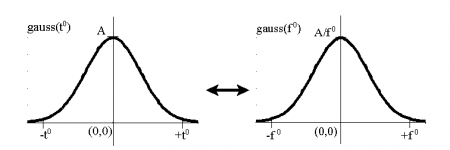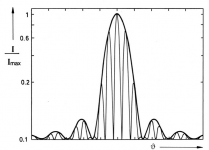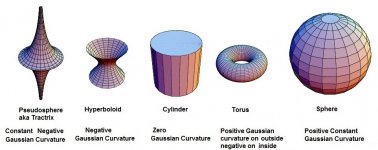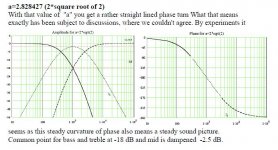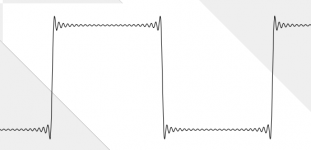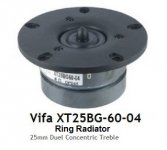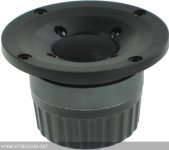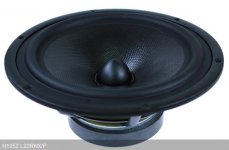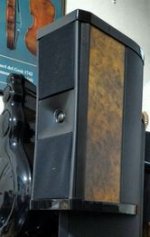Dave
The situation as I see it is that this "poor industry" does not see any advantage to an educated consumer.
I agree, with a caveat. They are certainly benefiting from keeping the consumer ignorant but could benefit more just by adding value.
Going on a tangent here, I think the high-end industry has done a terrible job of adding value for the consumer. They spent more effort satisfying their own needs and curiosities. Companies that early enough on made a decently compelling wireless small good sounding speaker have done well. There's no reason a company that really cared about sound quality couldn't have done this first, with ingenuity and wonderful sounding (instead of merely good) product. Why not use ingenuity to make the room less an issue, while also making the speakers small, beautiful and affordable? It's doable. The industry has no one to blame but themselves and prefers to keep the customers neurotic and oversell interconnect.
Earl, PS regarding Andy19191, sorry , I cross pollinated threads, but the comments I think apply here as well.
Last edited:
Dave,
I'm sorry but I must be dumb. I still don't get "regarding Andy19191, sorry , I cross pollinated threads, but the comments I think apply here as well."
I have always believed that educating audiophiles would be a good thing. But looking at the landscape, I think that I am nearly alone in this endeavor. My hats off to Floyd for the work that he has done, but it seems to be lost around here however.
Why "add value" when you can just make the same old things and convince people that it is great.
I'm sorry but I must be dumb. I still don't get "regarding Andy19191, sorry , I cross pollinated threads, but the comments I think apply here as well."
I have always believed that educating audiophiles would be a good thing. But looking at the landscape, I think that I am nearly alone in this endeavor. My hats off to Floyd for the work that he has done, but it seems to be lost around here however.
Why "add value" when you can just make the same old things and convince people that it is great.
when one wants to increase delay of early reflections then side-wall positioning - "Beveridge placement" - is the best in any given rectangular room, including small rooms

anyone can check it using this handy tool: http://www.linkwitzlab.com/LX521/Dipole First Room Reflections SL rev4-b.xls
from Listening_room
In case of side-wall "Beveridge placement" one has just to treat the wall near the speakers, eg. with deflecting panel, then this method of speaker placement seems to be the winner as far as increasing delay of reflection is the goal
And the best way to manage both the floor reflection and the ceiling reflection is to use short up-firing speakers.
Pure geometry.
There are lots of things I don't like about this arrangement. First of all, it requires that the listening position will be on the center line of the room, with symmetric reflections left and right. For sources that are supposed to image between the speakers, the reflections will cause the same interference pattern left and right (and also the same crosstalk), altering the spectrum in the same way. This can have a dulling effect theoretically and in observation.
Additionally, I believe that the azimuth of the reflection is an important consideration (maximizing phantom source distances isn't everything). I believe that the phantom sources (reflections) between the speakers (coming from the front wall) are more detrimental than sidewall reflections. Because of our two ears, we are less likely to confuse a sidewall reflection that comes from a substantially different azimuth than the phantom source as being part of that source.
As for short up-firing speakers being the best way to "manage" floor and ceiling reflections... I'm doubtful of that.
There are lots of things I don't like about this arrangement. First of all, it requires that the listening position will be on the center line of the room, with symmetric reflections left and right.
not really - precise symmetry is rather a requirement of conventional stereo arrangements
in case of this side-wall speaker placement there is a sweet-area instead of a sweet-spot - the soundstage remain stable for most listening positions in the rear 1/2 of the room, not necessarily along the center line, ie. the axis of symmetry of the room
Additionally, I believe that the azimuth of the reflection is an important consideration (maximizing phantom source distances isn't everything). I believe that the phantom sources (reflections) between the speakers (coming from the front wall) are more detrimental than sidewall reflections. Because of our two ears, we are less likely to confuse a sidewall reflection that comes from a substantially different azimuth than the phantom source as being part of that source.
I think is a (weighted) function of three variables - level, delay and azimuth.
As for short up-firing speakers being the best way to "manage" floor and ceiling reflections... I'm doubtful of that.
perhaps not "the best" - I have already recalled this statement - but still "effective"
Please do the math.
It is also a weighted function of many variables of course - the height of the speaker, its directivity, minimum listening distance etc. With all of them taken in good consideration there is no first order floor reflection reaching the listener at all and the ceiling reflection is delayed by more the 8 ms.
In fact in my own tests I eventually came to the conclusion that the desired result can be achieved by introducing a sufficient asymmetry between the spectral content of the floor and ceiling reflections - in my case by tilting a 8'' coincident KEF 45 degrees to the back, when the tweeter remains at the ear height.
There is no need for the loudspeaker to be short.
Last edited:
not really - precise symmetry is rather a requirement of conventional stereo arrangements
in case of this side-wall speaker placement there is a sweet-area instead of a sweet-spot - the soundstage remain stable for most listening positions in the rear 1/2 of the room, not necessarily along the center line, ie. the axis of symmetry of the room
The easiest way to set up a functioning stereo that can create a phantom center image is to sit between identical speakers that are symmetric about you. However, there's generally no requirement that the rest of the room needs to be symmetric about you. In my experience, it's better if the room is not symmetrical about you, for the reasons I've stated. I find claims of a sweet-area dubious. Sitting more than a couple of inches off the center line between the speakers is typically enough to skew the phase relationship at our ears and destroy the phantom center. The entire image is typically destroyed for live recordings done primarily with a couple of omni mics.
There are some things that can be done with azimuthal directivity to address the level imbalance moving off the center line, but this technique doesn't utilize those as far as I can tell.
I think is a (weighted) function of three variables - level, delay and azimuth.
I'm not sure that's an exhaustive list, but it hits the major players.
...
I find claims of a sweet-area dubious.
...
There are some things that can be done with azimuthal directivity to address the level imbalance moving off the center line, but this technique doesn't utilize those as far as I can tell.
But that depends on the particular speaker directivity and toe-in/toe-out.
There are two approaches to consider separately - the original Beveridge system with those very particular speakers:
An externally hosted image should be here but it was not working when we last tested it.
And Beveridge-inspired placement method presented for the first time by Richard Orford:
ttps://www.audioasylum.com/audio/general/messages/14/142996.html
Here the empirically determined guidelines are:
For a more general room size, first measure the width of the room W. Then place the L/R loudspeakers along the sidewall between (1/4)W and (1/2)W from the front wall.
You do not have to place them against the sidewall. If you move them in from the sidewall, all that happens is that you will have a somewhat narrower soundstage, approximately to the separation of the L/R loudspeakers.
Start out with the L/R loudspeakers facing each other across the room. You can experiment with toeing them into the listening area if you find that treble beaming appears to be a problem for your loudspeakers type. The key here is to get enough acoustic energy sprayed on the front wall so as to produce the required reflections.
Last edited:
I'm not sure that's an exhaustive list, but it hits the major players.
frequency spectrum, time envelope?
When people talk about frequency spectrum and time envelope, they actually are only skirting round the complexities of our 4 dimensional spacetime and the quantum theory. What about impedance, phase, dispersion and power response? Loudspeakers might seem to be an easy enough problem to solve, but IMO, you will run into the mathematical complexities of our Universe. 
Trust me on this, whilst we use 2D Fourier Transform to analyse what we are hearing, it's not the whole picture. For instance, how do you measure distortion? Maybe in terms of 2nd and 3rd harmonics. It's actually not the only way to do that. We old radio engineers used to use an entirely different technique called "White Noise Testing".
The idea, loosely, is to inject a bass frequency to the woofer and listen for noise from the tweeter. You do get noise from the tweeter, because the system is non-linear. A sort of crosstalk.
This whole thread is really about sharp changes in any parameter, versus gentle ones. And actually, if you want smooth, you use the 2D Gaussian transform. If you want sharp, you use 2D Fourier transform. TBH, something in the middle works for me. The correct theory, IMO, is Claude Shannon's idea about information. A loudspeaker is a channel that conveys information, and time and noise and bandwidth are factors in this.
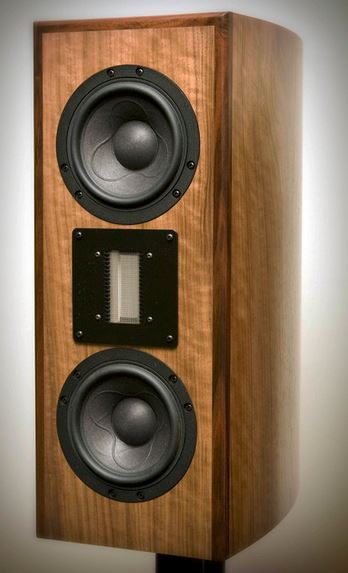
All is compromise. Because it's actually a 4D spacetime problem, and we used the considerably more advanced 3D Spatial Fourier Transform to get near it in Radar. I'm not sure it's solvable, you can always hear what you are listening to.
Trust me on this, whilst we use 2D Fourier Transform to analyse what we are hearing, it's not the whole picture. For instance, how do you measure distortion? Maybe in terms of 2nd and 3rd harmonics. It's actually not the only way to do that. We old radio engineers used to use an entirely different technique called "White Noise Testing".
The idea, loosely, is to inject a bass frequency to the woofer and listen for noise from the tweeter. You do get noise from the tweeter, because the system is non-linear. A sort of crosstalk.
This whole thread is really about sharp changes in any parameter, versus gentle ones. And actually, if you want smooth, you use the 2D Gaussian transform. If you want sharp, you use 2D Fourier transform. TBH, something in the middle works for me. The correct theory, IMO, is Claude Shannon's idea about information. A loudspeaker is a channel that conveys information, and time and noise and bandwidth are factors in this.
All is compromise. Because it's actually a 4D spacetime problem, and we used the considerably more advanced 3D Spatial Fourier Transform to get near it in Radar. I'm not sure it's solvable, you can always hear what you are listening to.
Attachments
Last edited:
doesn't most DSP use Fourier?
Don't get him started.
I only quote that since we are turning the page. I am assuming you've done the homework and know who Steen Duelund is: Articles by Mr. Steen Aa. Duelund – Duelund Coherent Audiodoesn't most DSP use Fourier?
Mathematically speaking, Fourier transform is about sine waves and brickwall filters. It's not the only game in town. AFAIK, there might be an infinite number of orthogonal (right-angled and hence linearly independant) functions you might use to analyse a linear system.
In fact, analysis has to end at some point. The point when you build something.
What is good about this one?
Or this one?
Or this one? (which is a Scan/RAAL combo, FWIW)
I could answer that. But if you asked me which one is best, I'd be struggling.
Everything by Steen Duelund is worth reading. The Einstein of loudspeakers, IMO. He gave us the correct mathematical theory of the 3 way speaker, for instance. Below. 
Here's the thing about Fourier Transform. It doesn't actually work perfectly. Gibbs phenomenon - Wikipedia
It has some infinities involved which cause terrible problematic wrinkles. It's called the Gibbs phenomenen. The spike on the edge of the pulse never goes away.
Here's the thing about Fourier Transform. It doesn't actually work perfectly. Gibbs phenomenon - Wikipedia
It has some infinities involved which cause terrible problematic wrinkles. It's called the Gibbs phenomenen. The spike on the edge of the pulse never goes away.
Attachments
I have a lot of Steen Duelund images from his work. He was actually a fourth order LR4 designer in two ways, and would use something resembling LR2 or LR4 in three ways, but always with very good phase alignment. He seemed to favour closed box and ring radiators too. Third order BW3 was not one of his interests, AFAIK, but remains another part of the repertoire than can work well.
But Steen was interested in everything in the loudspeaker. This can be power response from a circular aperture which has some relevance to the dispersion aspect of a loudspeaker:
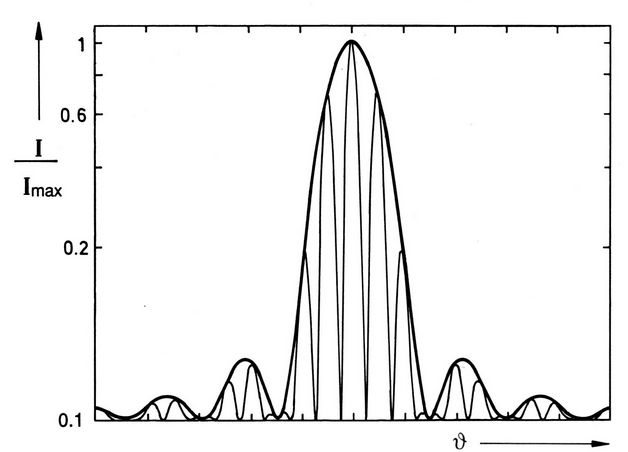
You can spend a lot of money on drive units designed along his principles. But in fact, SEAS and Vifa would get his approval. Perhaps they have read him?
But Steen was interested in everything in the loudspeaker. This can be power response from a circular aperture which has some relevance to the dispersion aspect of a loudspeaker:
You can spend a lot of money on drive units designed along his principles. But in fact, SEAS and Vifa would get his approval. Perhaps they have read him?
Attachments
But Steen was interested in everything in the loudspeaker.
judging from Gryphon speakers that he allegedly designed (eg. Gryphon Cantata) it seems that he wasn't particularly interested in diffraction or speaker-room interaction (I mean the pattern of room reflections generated by the loudspeaker)... basic considerations when one aims at realistic sound
Last edited:
See, graaf, here I am trying to move things forwards into clarity and understanding, and you want to keep moving back into confusion. Read some more: Articles by Mr. Steen Aa. Duelund – Duelund Coherent Audio
It took me years to understand some of his ideas. But his methods apply to ALL loudspeakers. And, FWIW, the Gryphon designs can only be said to be based around his ideas. But I see a great understanding of MTM diffraction and lobing there, because that is actually an MTTM if you think about why a ribbon is used.
Duelund had great understanding of all diffraction and filtering. But thought about it in a much more holistic way that applied to ALL loudspeakers. This was his genius. You eventually realise that ALL loudspeakers are just varied solutions to the same problems. A spectrum if you like. More of this, less of that. And some issues never completely disappear. You compromise.
I'll run you through his filter ideas in another post if you are interested. His discovery of how a two-way and a three-way is really the same speaker is very clever.
It took me years to understand some of his ideas. But his methods apply to ALL loudspeakers. And, FWIW, the Gryphon designs can only be said to be based around his ideas. But I see a great understanding of MTM diffraction and lobing there, because that is actually an MTTM if you think about why a ribbon is used.
Duelund had great understanding of all diffraction and filtering. But thought about it in a much more holistic way that applied to ALL loudspeakers. This was his genius. You eventually realise that ALL loudspeakers are just varied solutions to the same problems. A spectrum if you like. More of this, less of that. And some issues never completely disappear. You compromise.
I'll run you through his filter ideas in another post if you are interested. His discovery of how a two-way and a three-way is really the same speaker is very clever.
Attachments
-
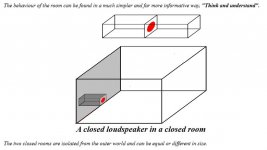 Steen_Duelund_diagram.JPG41.3 KB · Views: 1,173
Steen_Duelund_diagram.JPG41.3 KB · Views: 1,173 -
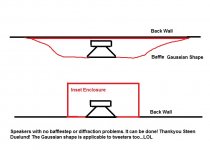 Steen_Duelund_room_acoustics_for_speakers..jpg56 KB · Views: 80
Steen_Duelund_room_acoustics_for_speakers..jpg56 KB · Views: 80 -
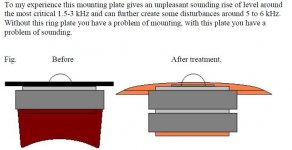 Steen_Duelund_Tweeter_Plate.JPG57.9 KB · Views: 93
Steen_Duelund_Tweeter_Plate.JPG57.9 KB · Views: 93 -
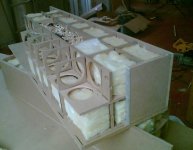 Duelund Matrix Closed Box.JPG46.8 KB · Views: 92
Duelund Matrix Closed Box.JPG46.8 KB · Views: 92 -
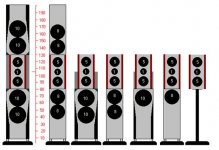 Duelund MTM.JPG42.6 KB · Views: 87
Duelund MTM.JPG42.6 KB · Views: 87 -
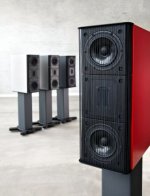 Gryphon_Mojo_Duelund_Loudspeaker.JPG33.9 KB · Views: 2,330
Gryphon_Mojo_Duelund_Loudspeaker.JPG33.9 KB · Views: 2,330 -
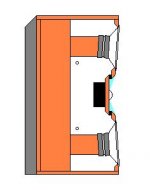 Steen Duelund MTM Time-aligned.JPG15.9 KB · Views: 329
Steen Duelund MTM Time-aligned.JPG15.9 KB · Views: 329
See, graaf, here I am trying to move things forwards into clarity and understanding, and you want to keep moving back into confusion.
well, I only know what I can see, what has been shown.
So please show me some genuine/100% Mr. Duelund's designs or just link a paper covering the questions of diffraction and reflection patterns
It's really not my business to have to prove anything. You take or leave ideas in the end. I just reviewed the Duelund article about the cabinet, the units and the room. All made sense to me! 
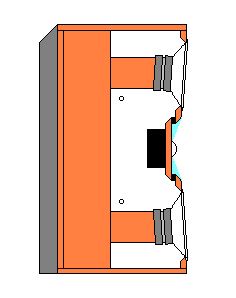
And, TBH, how is the Gryphon Cantata (since you bring it up) NOT true to some of his ideas? Am I missing something?
And, TBH, how is the Gryphon Cantata (since you bring it up) NOT true to some of his ideas? Am I missing something?
Attachments
- Status
- This old topic is closed. If you want to reopen this topic, contact a moderator using the "Report Post" button.
- Home
- Loudspeakers
- Multi-Way
- Well I suppose the shallow vs. steep argument will just go on and on
